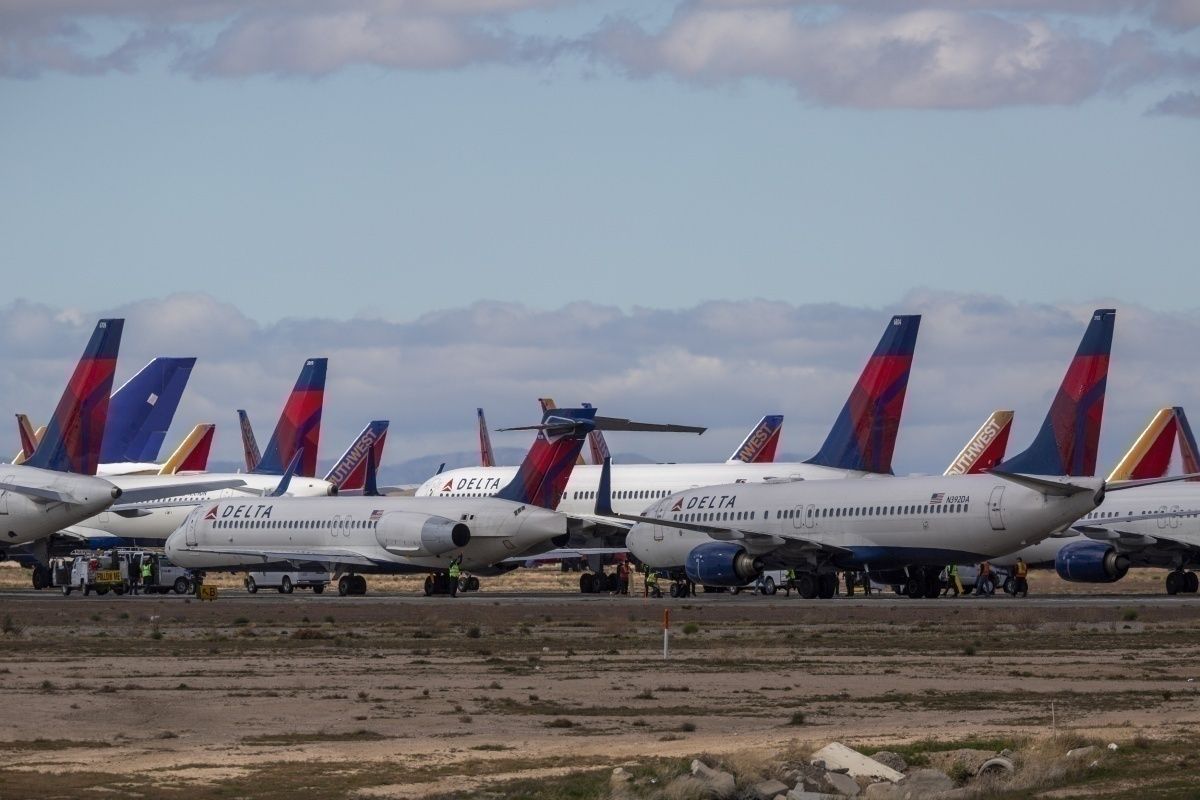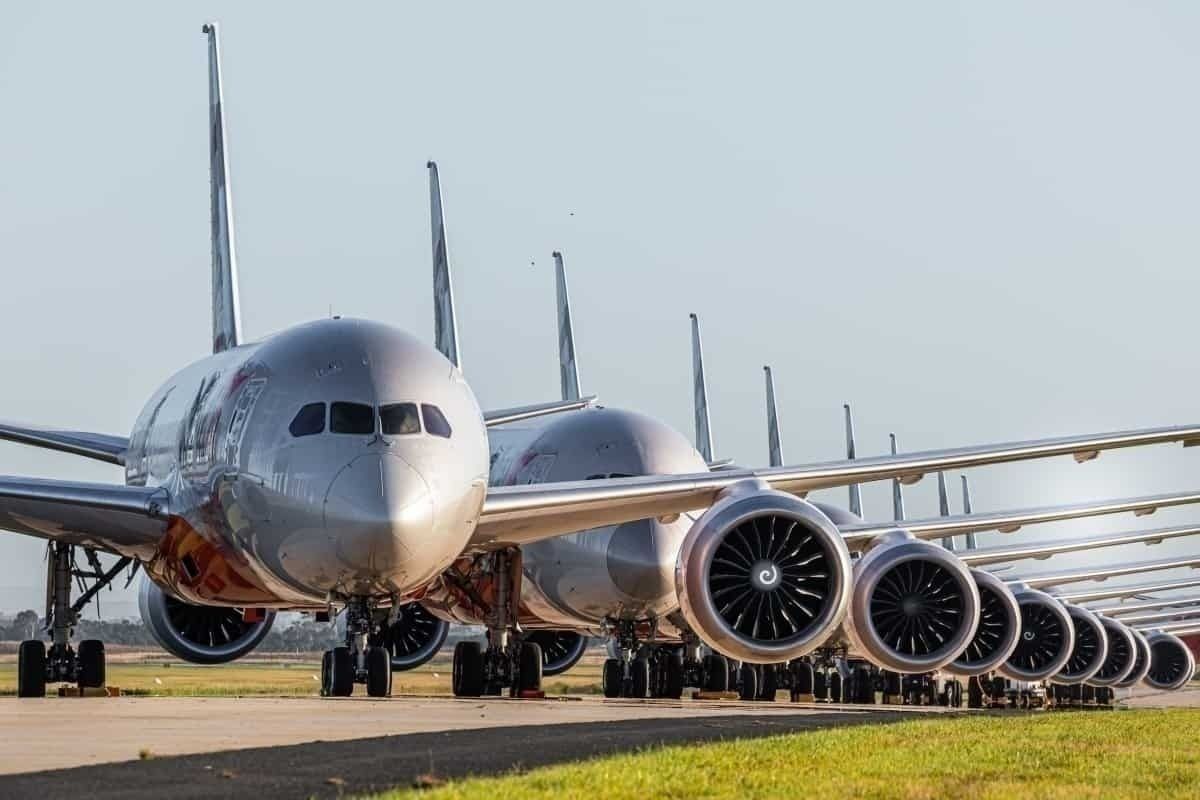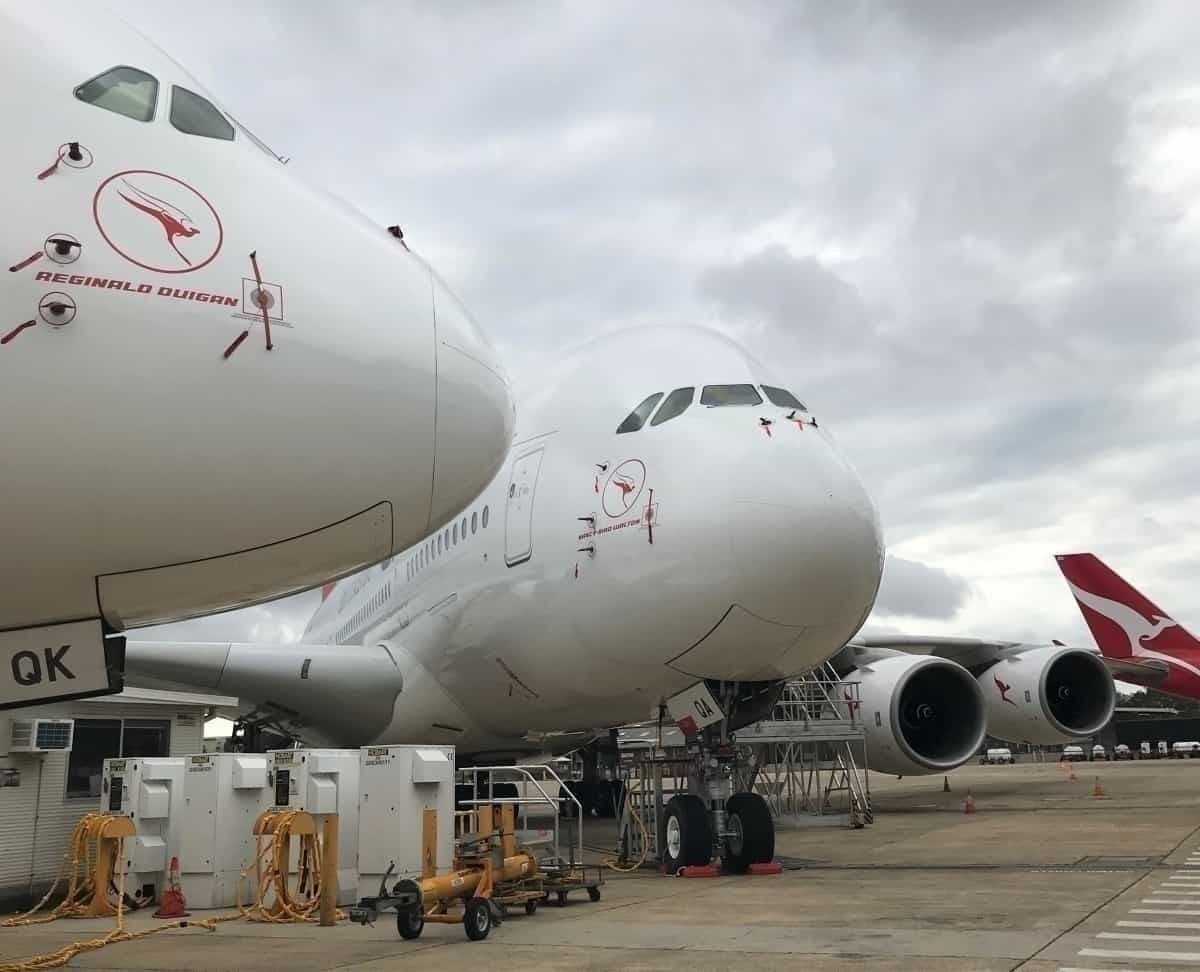Here at Simple Flying, we report stories every day about grounded aircraft. But grounding an aircraft isn't as straightforward as parking it somewhere, turning the engine off, locking the door and walking away. An idle plane requires continuous upkeep and planes are complex pieces of machinery. That upkeep requires people with sophisticated skill sets.
Putting planes to bed
Aircraft might be big but they are like small kids. If you put them to bed without being properly prepped, things are likely to go awry.
Australian airline Qantas has over 200 aircraft parked at various airports. Keeping track of where they all are is a bit of a mission. We know, for instance, where Qantas has parked its 12 A380s. VH-OQA, VH-OQC, VH-OQH and VH-OQL are at Sydney, VH-OQB, VH-OQF, and VH-OQJ are in Los Angeles, VH-OQE and VH-OQK are in Melbourne, VH-OQD is in the Middle East for maintenance, and VH-OQG and VH-OQI are in Dresden for refurbishment.
The airline also has other planes parked at Avalon (Melbourne), Sydney, Brisbane, and Alice Springs. Keeping track of larger fleets, such as Qantas' 80 Boeing 737s, is trickier. But wherever the aircraft go, they get lots of care and attention.
"We do lots of maintenance on the aircraft to ensure that it's in a maintainable condition when it comes back to service," says John Walker, Head Maintenance at Qantas.
"We wash the outside of the aircraft and we wash the inside of the aircraft, pretty much giving it a bath before putting it to bed."
The interior clean is what's called a deep clean. High-grade disinfectants are used to clean surfaces including walls, seats, armrests, and IFE screens.
Ground crew cover the cockpit windscreen with a silver foil to keep the sun off the instruments and screens inside.
Keeping the birds and insects out
All the external holes on the fuselage need to be covered. There are holes in the tails of big aircraft that act as part of the venting system for the aircraft's fuel tank. Birds can treat these holes as potential nesting sites.
Elsewhere on the aircraft, pitot, static and angle of attack sensors need to be covered to keep insects such as bees out.
The engine cowlings are also covered to keep out dust and insects. But as part of maintaining the aircraft while being stored the engines need to be fired up occasionally.
"We do things like run the engines, once every 15 days on some aircraft, once every 30 days on others," says John Walker.
Keeping the tires pumped
An important part of maintaining any parked aircraft is looking after the tires. Each of the parked Qantas A380s has 22 tires. Collectively, those tires are worth about USD$70,000, so looking after them is imperative. All parked aircraft, regardless of type, need to have their tires rotated every seven to fourteen days in order to avoid flat spots.
This can be done by towing the aircraft around the tarmac. Alternatively, ground crew can jack the aircraft up to manually rotate the wheels. Given that an A380 weighs 560 tonnes and each wheel alone weighs 120 kilograms, I know which option I would prefer.
Qantas says their teams of engineers at airports around Australia are continually looking after their parked aircraft. It's a pattern that airlines everywhere will be largely replicating at airports around the world.
As Qantas notes, they just want to get back into the air as soon as possible. Keeping their aircraft fresh and fit for purpose will make that so much easier.



